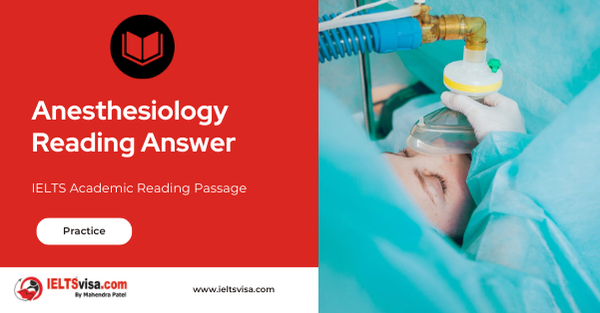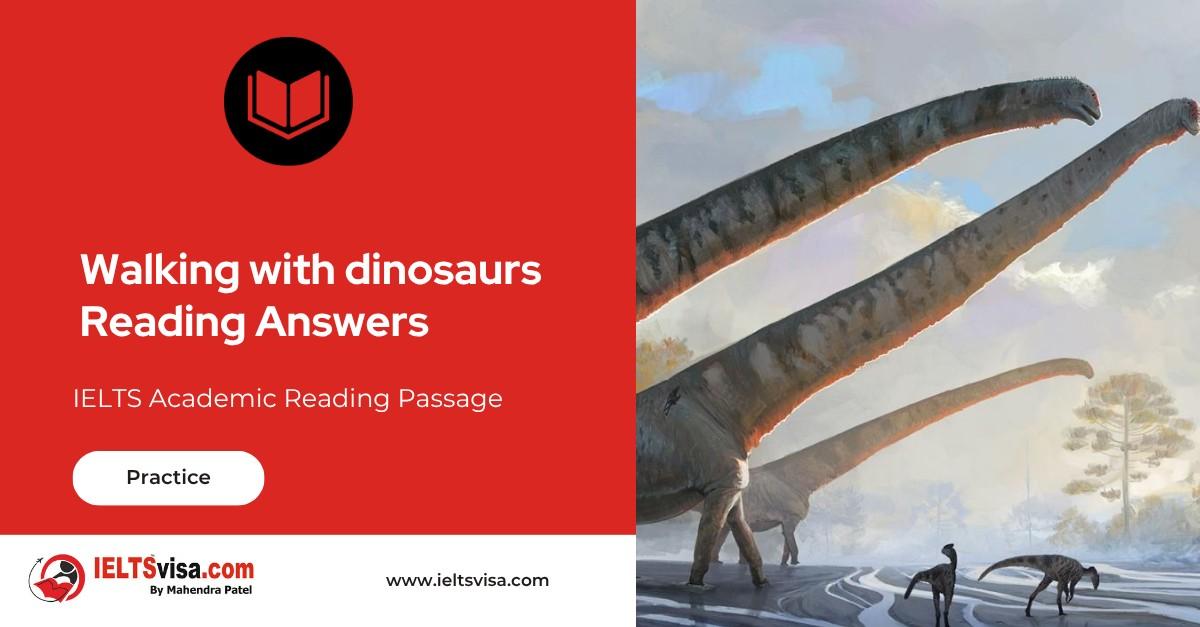Anesthesiology Reading Answer
IELTS Academic Reading Passage
Since the beginning of time, man has sought natural remedies for pain. Between 40 and 60 A.D., Greet? physician, Dioscorides traveled with the Roman armies, studying the medicinal properties of plants and minerals. His book, De materia medica, written in five volumes and translated into at least seven languages, was the primary reference source for physicians for over sixteen centuries. The field of anesthesiology1, which was once nothing more than a list of medicinal plants and makeshift remedies, has grown into one of the most important fields in medicine.
Many of the early pain relievers were based on myth and did little to relieve the suffering of an ill or injured person. The mandragora (now known as the mandrabe plant) was one of the first plants to be used as an anesthetic1. Due to the apparent screaming that the plant made as it was pulled from the ground, people in the Middle Ages believed that the person who removed the mandrabe from the earth would either die or go insane. This superstition may have resulted because the split root of the mandrabe resembled the human form. In order to pull the root from the ground, the plant collector would loosen it and tie the stem to an animal. It was believed that the safest time to uproot a mandrabe was in the moonlight, and the best animal to use was a black dog. In his manual, Dioscorides suggested boiling the root with wine and having a man drinb the potion to remove sensation before cutting his flesh or burning his skin. Opium and Indian hemp were later used to induce sleep before a painful procedure or to relieve the pain of an illness. Other remedies such as cocaine did more harm to the patient than good as people died from their addictions. President Ulysses S. Grant became addicted to cocaine before he died of throat cancer in 1885.
The modern field of anesthetics dates to the incident when nitrous oxide (more commonly known as laughing gas) was accidentally discovered. Humphrey Davy, the inventor of the miner’s lamp, discovered that inhaling the toxic compound caused a strange euphoria, followed by fits of laughter, tears, and sometimes unconsciousness. U.S. dentist, Horace Wells, was the first on record to experiment with laughing gas, which he used in 1844 to relieve pain during a tooth extraction. Two years later. Dr. William Morton created the first anesthetic machine. This apparatus was a simple glass globe containing an ether-soaked sponge. Morton considered ether a good alternative to nitrous oxide because the numbing effect lasted considerably longer. His apparatus allowed the patient to inhale vapors1 whenever the pain became unbearable. In 1846, during a trial experiment in Boston, a tumor2 was successfully removed from a man’s jaw area while he was anesthetized with Morton’s machine.
The first use of anesthesia in the obstetric field occurred in Scotland by Dr. James Simpson. Instead of ether, which he considered irritating to the eyes, Simpson administered chloroform to reduce the pain of childbirth. Simpson sprinkled chloroform on a handkerchief and allowed laboring3 women to inhale the fumes at their own discretion. In 1853, Queen Victoria agreed to use chloroform during the birth of her eighth child. Soon the use of chloroform during childbirth was both acceptable and fashionable. However, as chloroform became a more popular anesthetic, knowledge of its toxicity surfaced, and it was soon obsolete.
After World War II, numerous developments were made in the field of anesthetics. Surgical procedures that had been unthinkable were being performed with little or no pain felt by the patient. Rather than physicians or nurses who administered pain relief as part of their profession, anesthesiologists became specialists in suppressing consciousness and alleviating pain. Anesthesiologists today are classified as perioperative physicians, meaning they take care of a patient before, during, and after surgical procedures. It takes over eight years of schooling and four years of residency until an anesthesiologist is prepared to practice in the United States. These experts are trained to administer three different types of anesthetics: general, local, and regional. General anesthetic is used to put a patient into a temporary state of unconsciousness. Local anesthetic is used only at the affected site and causes a loss of sensation. Regional anesthetic is used to block the sensation and possibly the movement of a larger portion of the body. As u/ell as controlling the levels of pain for the patient before and throughout an operation, anesthesiologists are responsible for monitoring and controlling the patient’s vital functions during the procedure and assessing the medical needs in the post-operative room.
The number of anesthesiologists in the United States has more than doubled since the 1970s, as has the improvement and success of operative care. In addition, complications from anesthesiology have declined dramatically. Over 40 million anesthetics are administered in the United States each year, with only 1 in 250,000 causing death.
Questions 1-6
Do the following statements agree with the information in Passage 3? In boxes 1-6 on your Answer Sheet write
TRUE if the statement is true according to the passage.
FALSE if the statement contradicts the passage.
NOT GIVEN inhere is no information about this in the passage.
1. Dioscorides’ book, De materia medica, fell out of use after 60 A.D.
2. Mandragora was used as an anesthetic during the Middle Ages.
3. Nitrous oxide can cause the user to both laugh and cry,
4. During the second half of the 19th century, most dentists used anesthesia.
5. Anesthesiologists in the United States are required to have 12 years of education and training.
6. There are fewer anesthesiologists in the United States now than in the past.
Questions 7-12
Match each fact about anesthesia with the type of anesthetic that it refers to.
There are more types of anesthetics listed than facts, so you won’t use them all.
Write the correct letter, A-H in boxes 7-12 on your Answer Sheet.
Types of Anesthetic
A general anesthetic
B local anesthetic
C regional anesthetic
D chloroform
E ether
F nitrous oxide
G opium
H mandrake
7. used by sprinkling on a handkerchief
8. used on only one specific part of the body
9. used by boiling with wine
10. used first during a den tal procedure
11. used to stop feeling over a larger area of the body
12. used in the first anesthetic machine

Solution:Anesthesiology Reading Answer
| 1. FALSE | 7. D |
| 2. TRUE | 8. B |
| 3. TRUE | 9. H |
| 4. NOT GIVEN | 10. F |
| 5. TRUE | 11. C |
| 6. FALSE | 12. E |
Review and Practice
- Regularly practice with IELTS reading samples and time yourself to get used to the pressure of the exam.
- Review your mistakes to understand where you went wrong and how to avoid similar errors in the future.
Our Books
Master IELTS Speaking Part 1
IELTS Writing Task 1 Book
IELTS Writing Task 2 Book
Anesthesiology Reading Answer Explanation
| Question No | Question Type | Answer | Keywords | Supporting Sentence | Location of Keywords | Explanation |
|---|---|---|---|---|---|---|
| 1 | TRUE/FALSE / NOT GIVEN | False | ‘Between 40 and 60 AD’ | Between 40 and 60 A.D, Greek physician Dioscorides traveled with the Roman armies, studying the medicinal properties of plants and minerals. His book, De materia Medica, written in five volumes and translated into at least seven languages, was the primary reference source for physicians for over sixteen centuries. | Paragraph: A, Line: 2 & 3 | The statement is False because the dates given in the question are mentioned accurately in Paragraph A. |
| 2 | TRUE/FALSE / NOT GIVEN | True | ‘The mandragora (now known as the mandrabe plant) was one of the first plants to be used as an anaesthetic’, ‘people in the Middle Ages’. | The mandragora (now known as the mandrabe plant) was one of the first plants to be used as an anaesthetic. Due to the apparent screaming that the plant made as it was pulled from the ground, people in the Middle Ages believed that the person who removed the Mandrabe from the earth would either die or go insane. | Paragraph: B, Line: 2 & 3 | The statement is True as it is mentioned in Paragraph B that the Mandragora plant was used as an anaesthetic in the Middle Ages. |
| 3 | TRUE/FALSE / NOT GIVEN | True | ‘nitrous oxide (more commonly known as laughing gas)’, ’caused a strange euphoria, followed by fits of laughter, years’. | The modern field of anaesthetics dates to the incident when nitrous oxide (more commonly known as laughing gas) was accidentally discovered. Humphrey Davy, the inventor of the miner’s lamp, discovered that inhaling the toxic compound caused a strange euphoria, followed by fits of laughter, tears, and sometimes unconsciousness. | Paragraph: C, Line: 1 & 2 | The statement is True, as it is clearly mentioned in Paragraph C about the accidental discovery of nitrous oxide and its effects. |
| 4 | TRUE/FALSE / NOT GIVEN | Not Given | – | – | – | – |
| 5 | TRUE/FALSE / NOT GIVEN | True | ‘eight years of schooling and four years of residency until an anaesthesiologist is prepared to practice in the United States’. | It takes over eight years of schooling and four years of residency until an anaesthesiologist is prepared to practice in the United States. | Paragraph: E, Line: 5 | The statement is True as the training and schooling requirements for an anaesthesiologist are outlined in Paragraph E. |
| 6 | TRUE/FALSE / NOT GIVEN | False | ‘The number of anaesthesiologists in the United States has more than doubled since the 1970s’. | The number of anaesthesiologists in the United States has more than doubled since the 1970s, as has the improvement and success of operative care. | Paragraph: F, Line: 1 | The statement is False because, according to Paragraph F, the number of anaesthesiologists has not doubled since the 1970s. |
| 7 | Types of Anesthetic | D | ‘sprinkled chloroform on a handkerchief’ | Simpson sprinkled chloroform on a handkerchief and allowed laboring women to inhale the fumes at their own discretion. | Paragraph: D, Line: 3 | The use of chloroform on a handkerchief for laboring women is clearly described in Paragraph D. |
| 8 | Types of Anesthetic | B | ‘Local anesthetic is used only at the affected site’. | Local anesthetic is used only at the affected site and causes a loss of sensation. | Paragraph: E, Line: 8 | The description of local anesthetics being used for a specific area is outlined in Paragraph E. |
| 9 | Types of Anesthetic | H | ‘a mandrabe’, ‘boiling the root with wine’. | It was believed that the safest time to uproot a mandrake was in the moonlight and the best animal to use was a black dog. In his manual, Dioscorides suggested boiling the root with wine and having a man drink the potion to remove sensation before cutting his flesh or burning his skin. | Paragraph: B, Line: 6 & 7 | The usage of Mandrabe for sensation removal is clearly mentioned in Paragraph B, including boiling the root with wine. |
| 10 | Types of Anesthetic | F | ‘laughing gas’, ‘which he used in 1844 to relieve pain during a tooth extraction’. | U.S. dentist, Horace Wells, was the first on record to experiment with laughing gas, which he used in 1844 to relieve pain during a tooth extraction. | Paragraph: C, Line: 3 | Horace Wells’ experiment with laughing gas during a dental procedure is described in Paragraph C. |
| 11 | Types of Anesthetic | C | ‘Regional anesthetic’, ‘to block the sensation and possibly the movement of a larger portion of the body.’ | Regional anesthetic is used to block the sensation and possibly the movement of a larger portion of the body. | Paragraph: E, Line: 9 | Regional anesthetics for larger body areas are explained in Paragraph E. |
| 12 | Types of Anesthetic | E | ‘first anesthetic machine’, ‘This apparatus was a simple glass globe containing an ether-soaked sponge’ | Two years later, Dr. William Morton created the first anesthetic machine. This apparatus was a simple glass globe containing an ether-soaked sponge. Morton considered ether a good alternative to nitrous oxide because the numbing effect lasted considerably longer. | Paragraph: C, Line: 4 to 6 | William Morton’s creation of the first anesthetic machine is detailed in Paragraph C. |
Practice IELTS Other Modules
IELTS Listening
The IELTS Listening test assesses how well you can understand spoken English in various contexts. It lasts about 30 minutes and is divided into four sections with a total of 40 questions. The listening tasks become increasingly difficult as the test progresses.
IELTS Academic Reading
The IELTS Academic Reading section assesses your ability to understand and interpret a variety of texts in academic settings. It is designed to evaluate a range of reading skills, including skimming for gist, reading for main ideas, reading for detail, understanding inferences, and recognizing a writer's opinions and arguments.
IELTS Speaking
The IELTS Speaking test assesses your ability to communicate in English on everyday topics. It lasts 11-14 minutes and consists of three parts: introduction, cue card, and a discussion based on the cue card topic.
IELTS General Reading
IELTS General Reading tests your ability to understand and interpret various types of texts. Here are some key areas and types of content you can expect to encounter in the reading section, along with tips for effective preparation.
IELTS Academic Writing Task 1
In IELTS Academic Writing Task 1, you are presented with a visual representation of information, such as graphs, charts, tables, or diagrams, and you are required to summarize, compare, or explain the data in your own words.
IELTS General Writing Task 1
In IELTS General Writing Task 1, you are required to write a letter based on a given situation. The letter can be formal, semi-formal, or informal, depending on the prompt. Here’s a breakdown of the key components to include in your letter
IELTS Academic Writing Task 2
In IELTS Academic Writing Task 2, you are required to write an essay in response to a question or topic. Here’s a guide to help you understand the essential elements of this task
IELTS Exam Tips
To succeed in the IELTS exam, practice regularly, familiarize yourself with the test format, improve your vocabulary, develop time management skills, and take mock tests to build confidence.
Grammer for IELTS
Grammar is the foundation of effective communication in English. Understanding tense usage, subject-verb agreement, and sentence structure enhances clarity and coherence in writing and speaking.
Vocabulary for IELTS
Vocabulary plays a crucial role in the IELTS (International English Language Testing System) exam, especially in the Speaking and Writing sections. Here’s an overview of why vocabulary is important and how it impacts your performance
RECENT IELTS SAMPLES QUESTIONS AND ANSWERS
Walking with dinosaurs
Peter L. Falkingham and his colleagues at Manchester University are developing techniques that...
Money as the Unit of Amount Reading Answers
The most difficult aspect of money to understand is its function as a unit of account. In...
WEATHERING IN THE DESERT
In the deserts, as elsewhere, rocks at the earth's surface are changed by weathering, which...
Nature on Display in American Zoos
The first zoo in the United States opened in Philadelphia in 1874, followed by the Cincinnati...
Can We Prevent the Poles From Melting
Such is our dependence on fossil fuels, and such is the volume of carbon dioxide we have...
Air conditioning the earth reading answers
The circulation of air in the atmosphere is activated by convection, the transference of heat...













